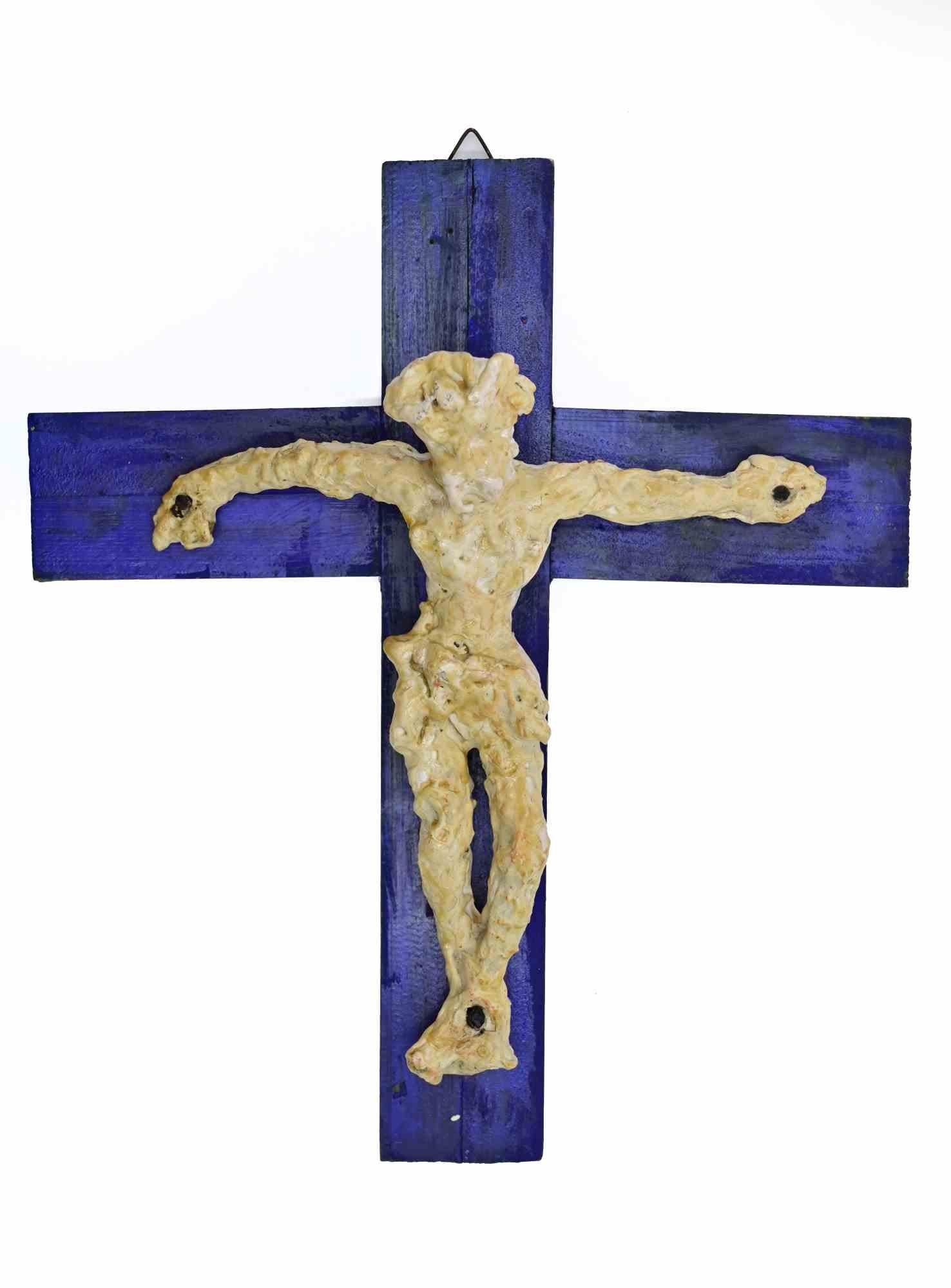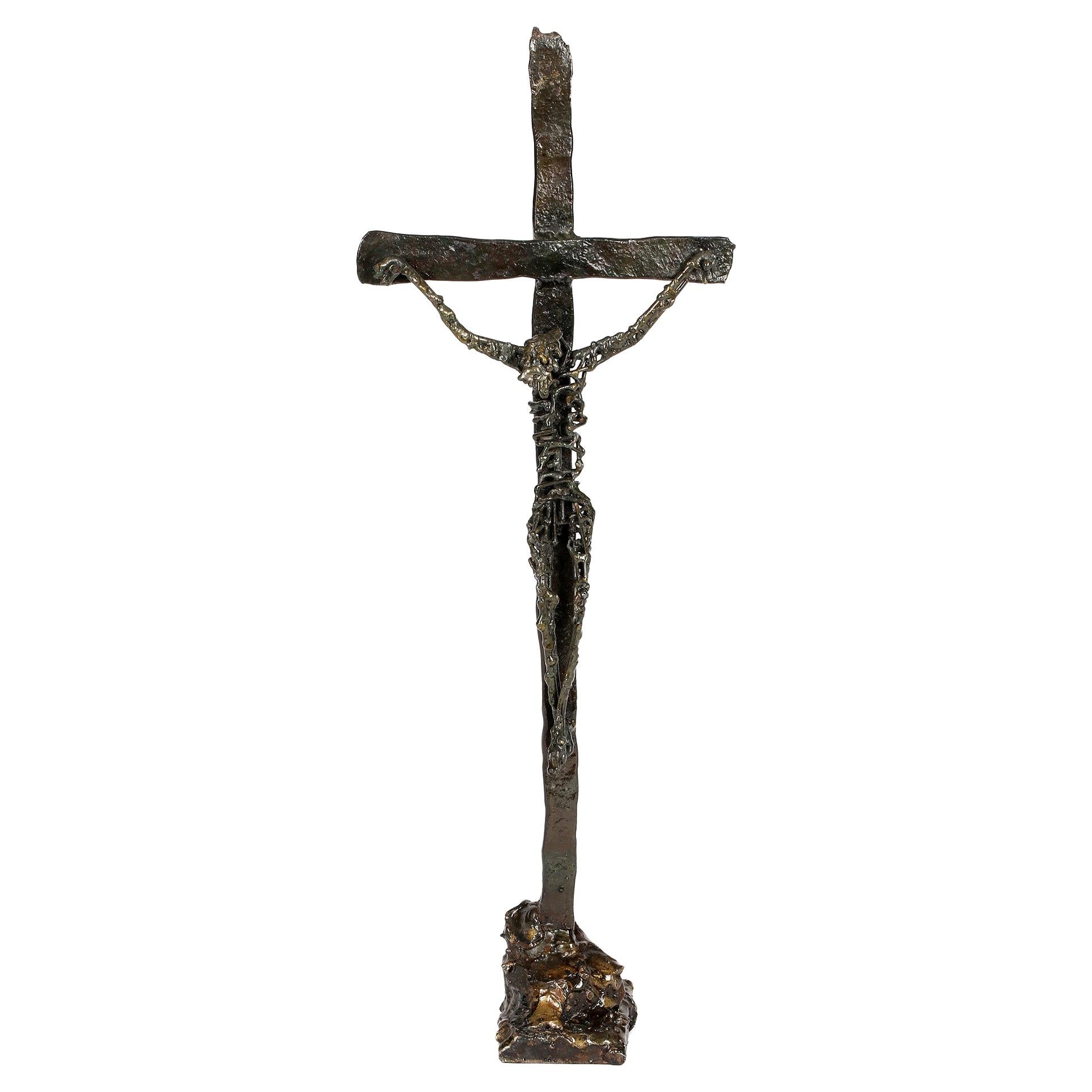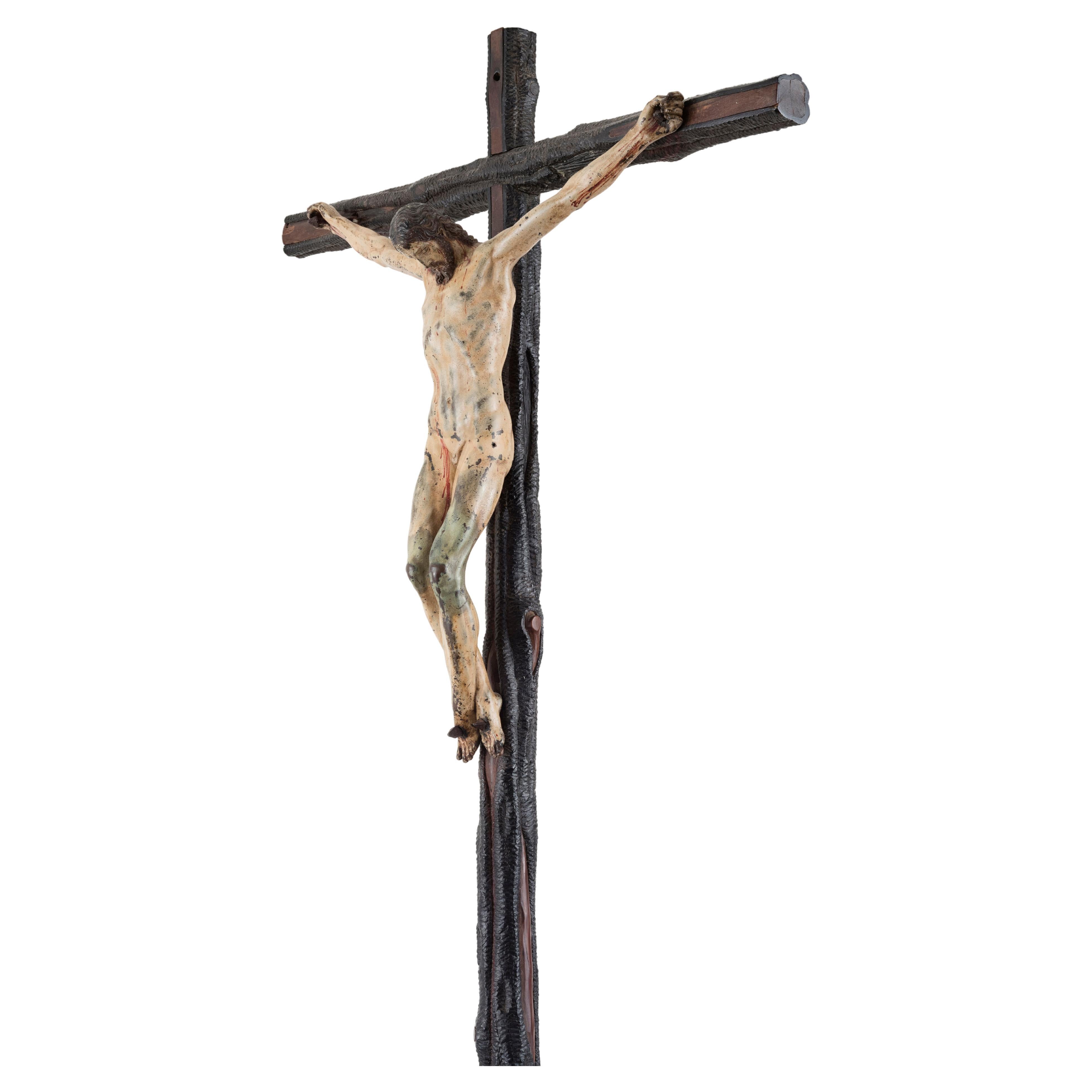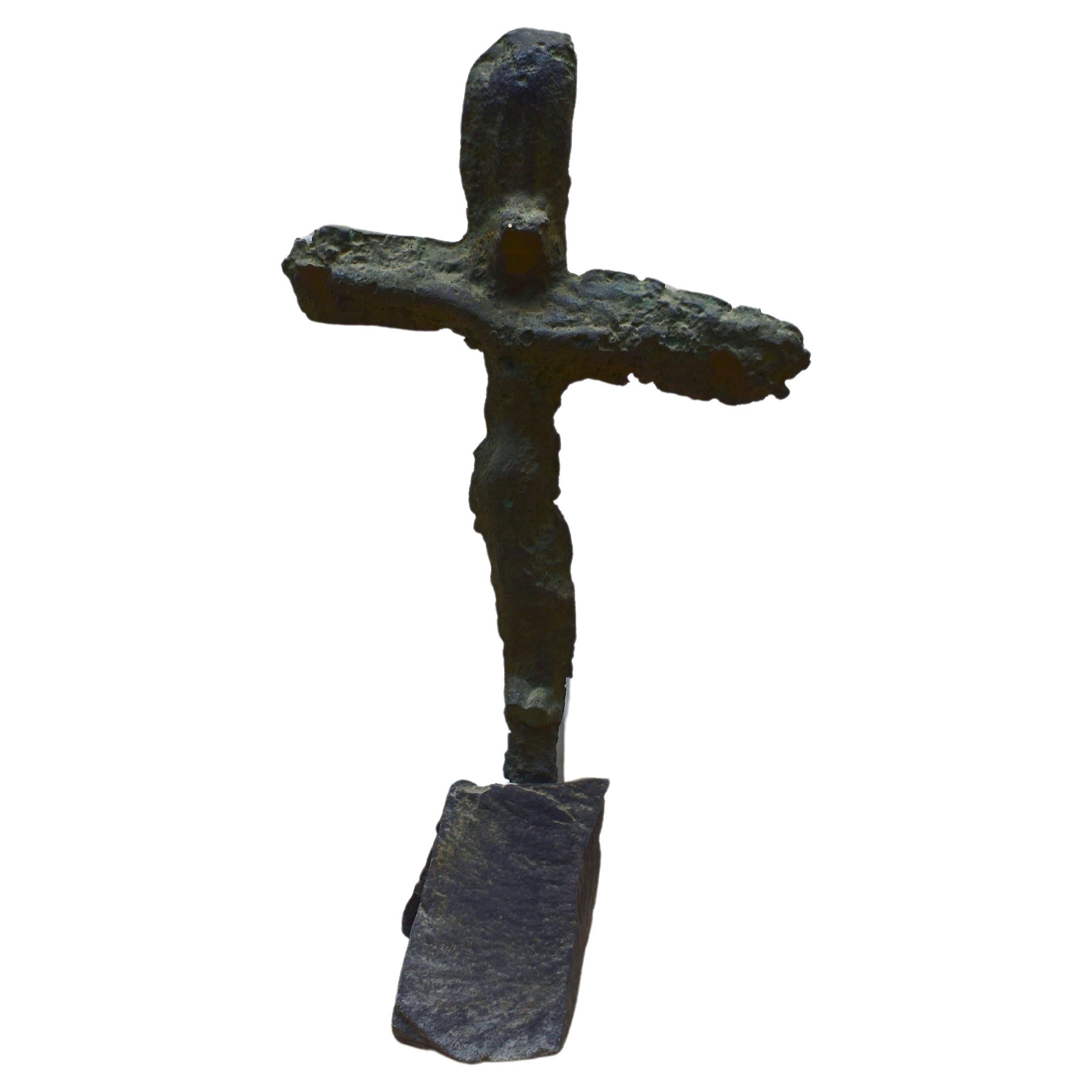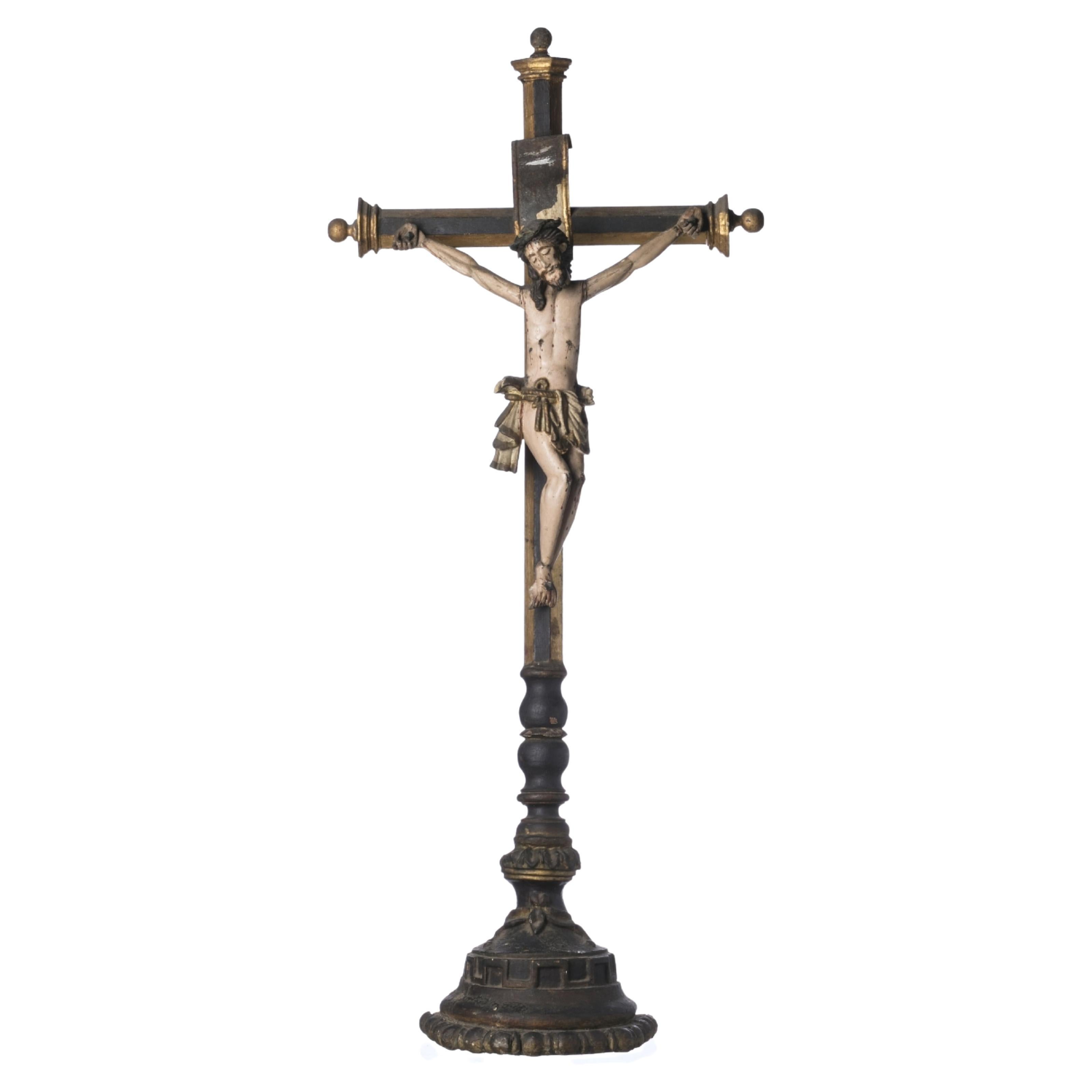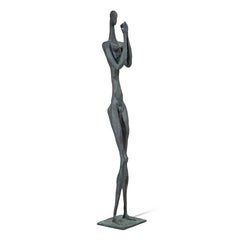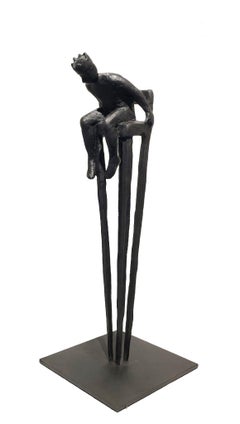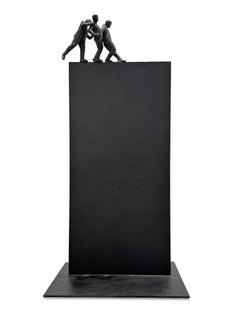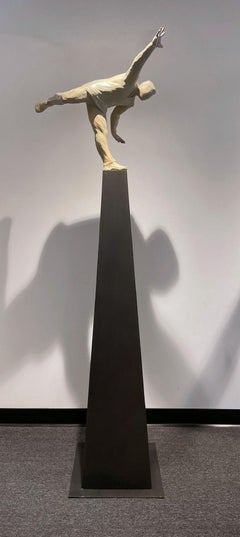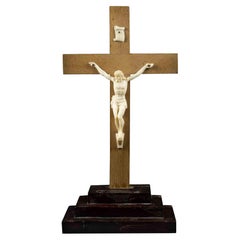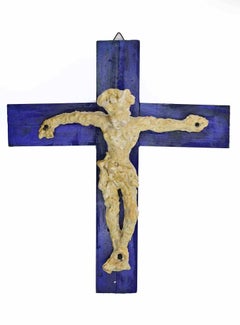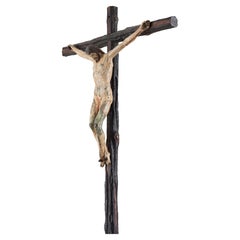Items Similar to Crucifixion
Want more images or videos?
Request additional images or videos from the seller
1 of 5
Doris CaesarCrucifixionc. 1955
c. 1955
$17,000
£13,148.80
€14,969.15
CA$24,409.26
A$26,667.86
CHF 13,976.72
MX$318,422.78
NOK 176,876.70
SEK 164,933.85
DKK 111,795.66
About the Item
signed "Caesar" lower right edge
American, 1892-1971
Doris Porter Caesar was born in 1892 in Brooklyn, New York. Her father’s successful career as a lawyer allowed her to attend Miss Chapin’s School for transferring to the prestigious Spence School in New York City. At age 16, Caesar supplemented her studies at the Art Students League. After marrying in 1913, Caesar put her artistic ambitions on hold while she raised her three children. In 1925, she resumed artistic pursuits, studying with the pioneering cubist, Alexander Archipenko. Her tutelage under Archipenko allowed her to reemerge as a sculptor, and she exhibited her first bronze piece in 1927. The exhibitor and dealer, E. Weyhe, ran a bookstore and art gallery on Lexington Avenue. Weyhe’s personal collection of works by Wilhelm Barlach, Ernst Lehmbruck, and Käthe Kollwitz, and his enthusiasm for German Expressionism influenced Caesar to develop her own Expressionistic style. She abandoned classical forms and distorted her figures until they were almost “stick-like” in appearance. Her work became progressively distorted. In many of her finished bronzes, her unsmoothed thumb marks remain, imprinted during the clay sculpting process.
- Creator:Doris Caesar (1892 - 1971, American)
- Creation Year:c. 1955
- Dimensions:Height: 20.25 in (51.44 cm)Width: 11 in (27.94 cm)Depth: 3 in (7.62 cm)
- Medium:
- Movement & Style:
- Period:
- Condition:
- Gallery Location:Greenwich, CT
- Reference Number:1stDibs: LU1819583412
About the Seller
4.7
Gold Seller
Premium sellers maintaining a 4.3+ rating and 24-hour response times
Established in 1986
1stDibs seller since 2013
171 sales on 1stDibs
Typical response time: 4 hours
- ShippingRetrieving quote...Shipping from: Greenwich, CT
- Return Policy
More From This Seller
View AllFleet Moment
By Doris Caesar
Located in Greenwich, CT
Featured in the Doris Caesar catalog by Martin H. Bush, page 110.
Category
1950s Expressionist Figurative Sculptures
Materials
Bronze
Imbalance
By Jim Rennert
Located in Greenwich, CT
Edition of 9
Category
2010s Contemporary Figurative Sculptures
Materials
Bronze
$10,500
Hold the Line
By Jim Rennert
Located in Greenwich, CT
Edition of 9
Suitable for outdoors.
Renowned for his suited everyman character, Jim Rennert’s sculptures have graced the New York City streetscape for over a decade as public art in...
Category
2010s Contemporary Figurative Sculptures
Materials
Bronze, Stainless Steel
Winging It
By Jim Rennert
Located in Greenwich, CT
Edition of 9.
The figure is about 20 inches tall.
Jim Rennert was born in 1958 and was raised in the Southwest United States. Rennert began exhibiting his work in 1993 and has since...
Category
2010s Contemporary Figurative Sculptures
Materials
Bronze, Steel
$21,500
Angel
By Bruno Lucchesi
Located in Greenwich, CT
Unique bronze sculpture of an angel
Category
20th Century Figurative Sculptures
Materials
Bronze
WTF
By Jim Rennert
Located in Greenwich, CT
8.5 ft. version of Jim Rennert's sculpture "WTF."
Edition of 3
American, b. 1958
Jim Rennert was born in 1958, and grew up in Las Vegas, Nevada, and Salt Lake City, Utah. After ten...
Category
2010s Contemporary Figurative Sculptures
Materials
Bronze
$250,000
You May Also Like
The Crucifixion, 1980s
Located in Roma, IT
The Crucifixion is a decorative object realized in 1980s.
Wood cricified Christ.
Category
Vintage 1980s Italian Sculptures and Carvings
Materials
Wood
Christ on the Cross - Sculpture by Sirio Pellegrini - 1960s
Located in Roma, IT
Painted Terracotta sculpture realized by Sirio Pellegrini in 1960s.
Good condition.
Sirio Pellegrini, born in Rome on March 1, 1922, of Abruzzo origins (Capestrano), spent his chil...
Category
1960s Modern Figurative Sculptures
Materials
Terracotta
Iron Crucifix Sculpture In The Style Of Regardt Van De Meulen
Located in Bishop's Stortford, Hertfordshire
A very stylish iron work sculpture of Christ hanging on the cross in the manner of Regardt van de Meulen and dating from the 20th/21st century. The crucifix stands on a rectangular w...
Category
21st Century and Contemporary South African Modern Abstract Sculptures
Materials
Iron
Rare and important painted bronze Crucifix after a model by Michelangelo
By Michelangelo Buonarroti
Located in Leesburg, VA
A rare and very fine bronze corpus of Christ after a model by Michelangelo, cast ca. 1597-1600 by Juan Bautista Franconio and painted in 1600 by Francisco Pacheco in Seville, Spain.
The present corpus reproduces a model attributed to Michelangelo. The best known example, lesser in quality, is one on display at the Metropolitan Museum of Art (MET).
The association of this corpus with Michelangelo was first brought to light by Manuel Gomez-Moreno (1930-33) who studied the wider circulated casts identified throughout Spain. The attribution to Michelangelo was subsequently followed by John Goldsmith-Phillips (1937) of the MET and again by Michelangelo expert, Charles de Tolnay (1960).
While Michelangelo is best known for his monumental works, there are four documented crucifixes he made. The best known example is the large-scale wooden crucifix for the Church of Santa Maria del Santo Spirito in Florence, made in 1492 as a gift for the Prior, Giovanni di Lap Bicchiellini, for allowing him to study the anatomy of corpses at the hospital there. In 1562, Michelangelo wrote two letters to his nephew, Lionardo, indicating his intention to carve a wooden crucifix for him. In 1563 a letter between Lionardo and the Italian sculptor Tiberio Calcagni, mentions this same crucifix (a sketch of a corpus on the verso of a sheet depicting Michelangelo’s designs for St. Peter’s Basillica [Palais des Beaux-Arts in Lille] may reproduce this). That Michelangelo was working on small corpora in the last years of his life is further evidenced by the small (26.5 cm) unfinished wooden crucifix located at the Casa Buonarroti, considered his last known sculptural undertaking. Michelangelo’s contemporary biographer, Giorgio Vasari additionally cites that Michelangelo, in his later years, made a small crucifix for his friend, Menighella, as a gift.
Surviving sketches also indicate Michelangelo’s study of this subject throughout his career, most notably during the end of his life but also during the 1530s-40s as he deepened his spiritual roots. The occasional cameo of crucified Christ’s throughout his sketched oeuvre have made it challenging for scholars to link such sketches to any documented commissions of importance. All the while, in consideration that such objects were made as gifts, it is unlikely they should be linked with commissions.
Nonetheless, a number of theories concerning Michelangelo’s sketches of Christ crucified have been proposed and some may regard the origin of the present sculpture. It has been suggested that the corpus could have its impetus with Michelangelo’s work on the Medici Chapel, whose exclusive design was given to the master. It is sensible smaller details, like an altar cross, could have fallen under his responsibility (see for example British Museum, Inv. 1859,0625.552). Others have noted the possibility of an unrealized large marble Crucifixion group which never came to fruition but whose marble blocks had been measured according to a sheet at the Casa Buonarroti.
A unique suggestion is that Michelangelo could have made the crucifix for Vittoria Colonna, of whom he was exceedingly fond and with whom he exchanged gifts along with mutual spiritual proclivities. In particular, Vittoria had an interest in the life of St. Bridget, whose vision of Christ closely resembles our sculpture, most notably with Christ’s proper-left leg and foot crossed over his right, an iconography that is incredibly scarce for crucifixes. The suggestion could add sense to Benedetto Varchi’s comment that Michelangelo made a sculpted “nude Christ…he gave to the most divine Marchesa of Pescara (Vittoria Colonna).”
Of that same period, two sketches can be visually linked to our sculpture. Tolnay relates it to a sketch of a Crucified Christ at the Teylers Museum (Inv. A034) of which Paul Joannides comments on its quality as suggestive of preparations for a sculptural work. Joannides also calls attention to a related drawing attributed to Raffaello da Montelupo copying what is believed to be a lost sketch by Michelangelo. Its relationship with our sculpture is apparent. Montelupo, a pupil of Michelangelo’s, returned to Rome to serve him in 1541, assisting with the continued work on the tomb of Pope Julius II, suggesting again an origin for the corpus ca. 1540.
The earliest firm date that can be given to the present corpus is 1574 where it appears as a rather crudely conceived Crucifixion panel, flanked by two mourners in low-relief and integrally cast for use as the bronze tabernacle door to a ciborium now located at the Church of San Lorenzo in Padula. Etched in wax residue on the back of the door is the date, 27 January 1574, indicating the corpus would have at least been available as a model by late 1573.
The Padula tabernacle was completed by Michelangelo’s assistant, Jacopo del Duca and likely has its origins with Michelangelo’s uncompleted tabernacle for the Basilica of St. Mary of the Angels in Rome.
The impetus for the Padula tabernacle’s Crucifixion panel begins with a series of late Crucifixion sketches by Michelangelo, depicting a scene of Christ crucified and flanked by two mourners (see British Museum Inv. 1895.0915.510; Ashmolean Museum Inv. 1846.89, KP II 343 recto; Windsor Castle RCIN 912761 recto; and Louvre Inv. 700). A faintly traced block possibly intended for sculpting the sketch of the crucified Christ on its recto was discovered by Tolnay on a version of the composition at Windsor Castle. The Windsor sketch and those related to it appear to have served as preparatory designs for what was probably intended to become the Basilica of St. Mary’s tabernacle door. Vasari documents that the project was to be designed by Michelangelo and cast by his assistant, Jacopo del Duca. Michelangelo died before the commission was complete, though on 15 March 1565, Jacopo writes to Michelangelo’s nephew stating, “I have started making the bronze tabernacle, depending on the model of his that was in Rome, already almost half complete.” Various circumstances interrupted the completion of the tabernacle, though its concept is later revitalized by Jacopo during preparations to sell a tabernacle, after Michelangelo’s designs, to Spain for Madrid’s El Escorial almost a decade later. The El Escorial tabernacle likewise encountered problems and was aborted but Jacopo successfully sold it shortly thereafter to the Carthusians of Padula.
An etched date, 30 May 1572, along the base of the Padula tabernacle indicates its framework was already cast by then. A 1573 summary of the tabernacle also describes the original format for the door and relief panels, intended to be square in dimension. However, a last minute decision to heighten them was abruptly made during Jacopo’s negotiations to sell the tabernacle to King Phillip II of Spain. Shortly thereafter the commission was aborted. Philippe Malgouyres notes that the Padula tabernacle’s final state is a mixed product of the original design intended for Spain’s El Escorial, recycling various parts that had already been cast and adding new quickly finished elements for its sale to Padula, explaining its unusually discordant quality, particularly as concerns the crudeness of the door and relief panels which were clearly made later (by January 1574).
Apart from his own admission in letters to Spain, it is apparent, however, that Jacopo relied upon his deceased master’s designs while hastily realizing the Padula panels. If Michelangelo had already earlier conceived a crucifix model, and Jacopo had access to that model, its logical he could have hastily employed it for incorporation on the door panel to the tabernacle. It is worth noting some modifications he made to the model, extending Christ’s arms further up in order to fit them into the scale of the panel and further lowering his chin to his chest in order to instill physiognomic congruence. A crude panel of the Deposition also follows after Michelangelo’s late sketches and is likewise known by examples thought to be modifications by Jacopo based upon Michelangelo’s initial sculptural conception (see Malgouyres: La Deposition du Christ de Jacopo del Duca, chef-d’oeuvre posthume de Michel-Ange).
Jacopo’s appropriation of an original model by Michelangelo for more than one relief on the Padula tabernacle adds further indication that the crucifix was not an object unique to Jacopo’s hand, as few scholars have posited, but rather belongs to Michelangelo’s original...
Category
Antique 16th Century Renaissance Figurative Sculptures
Materials
Bronze
Sculptural Crucifixion by the Catalan Artist Xavier Ruscallleda
Located in Vulpellac, Girona
A sculptural interpretation of the Crucifixion by the Catalan artist Xavier Ruscallleda (1944 - 2008). Born in Sant Feliu de Guixols he went to study art at Sant Jordi School of Fine Art in Barcelona. He left to focus on informalism and abstraction in painting during the fifties and sixties. However, he also experimented with sculpture. In this case he created an abstract interpretation of the Christian principle symbol of the Crucifixion. The sculpture is made out of raw iron metal whereby he has used traditional blacksmith methods of smithing and forging to shape the metal. The metal has then been oxide to generate this green patina effect. The base of the object is placed with a rough black rock which holds it in place and allows it to retain its balance. It is an interesting object.
Category
Late 20th Century Spanish Abstract Sculptures
Materials
Metal, Iron, Wrought Iron
JESUS CHRIST CRUCIFIED Portuguese Sculpture from the 17th Century
Located in Madrid, ES
JESUS CHRIST CRUCIFIED
17th Century Portuguese sculpture
in carved wood, polychrome and gilded.
Small flaws in the polychromy.
Height: (Christ) 32 cm. Height: (total) 86 cm.
good co...
Category
Antique 17th Century Portuguese Baroque Religious Items
Materials
Wood

